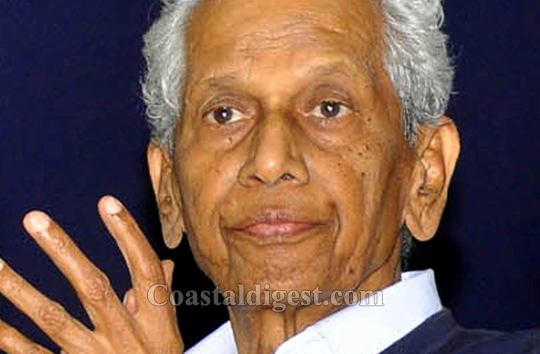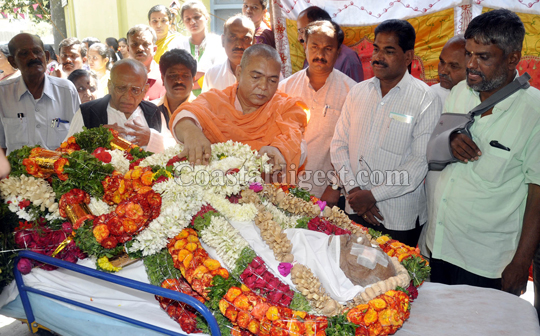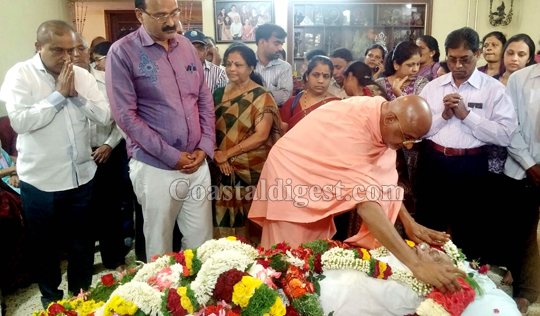May 12: Children suffering from non-respiratory disease symptoms like diarrhea and fever, or those with a history of exposure to the novel coronavirus, should be suspected of having COVID-19, a new study says.
According to the research, published in the journal Frontiers in Pediatrics, gastrointestinal symptoms first suffered by some children hints at potential infection with SARS-CoV-2 through the digestive tract.
"This case series is the first report to describe the clinical features of COVID-19 with non-respiratory symptoms as the first manifestation in children," the scientists from Tongji Hospital in China wrote in the study.
They explained that the gastrointestinal symptoms could be arising since the type of receptors in lung cells targeted by the virus can also be found in the intestines.
Most children are only mildly affected by COVID-19, and the few severe cases often have underlying health issues, the researchers said.
"It is easy to miss its diagnosis in the early stage, when a child has non-respiratory symptoms, or suffers from another illness," said study co-author Wenbin Li, who works at the Department of Pediatrics, Tongji Hospital.
"Based on our experience of dealing with COVID-19, in regions where this virus is epidemic, children suffering from digestive tract symptoms, especially with fever and/or a history of exposure to this disease, should be suspected of being infected with this virus," Li said.
In the study, the scientists described the clinical features of children admitted to hospital with non-respiratory symptoms, who were subsequently diagnosed with pneumonia and COVID-19.
"These children were seeking medical advice in the emergency department for unrelated problems, for example, one had a kidney stone, another a head trauma," Li said.
The study noted that all the children had pneumonia, which was confirmed by chest X-ray scan before or soon after admission.
These children were then confirmed to have COVID-19.
While their COVID-19 symptoms were initially mild or relatively hidden before their hospital admission, four out of the five cases had digestive tract symptoms as the first manifestation of this disease, the researchers said.
Li hopes that doctors will use the findings to quickly diagnose and isolate patients with similar symptoms, which may aid early treatment and reduce transmission.
According to the researchers, the children's gastrointestinal symptoms, which have also been recorded in adult patients, could be an additional route of infection.
"The gastrointestinal symptoms experienced by these children may be related to the distribution of receptors and the transmission pathway associated with COVID-19 infection in humans," Li explained.
Since the virus infects people via the ACE2 receptor, which can be found in certain cells in the lungs as well as the intestines, COVID-19 might infect patients not only through the respiratory tract in the form of air droplets, but also through the digestive tract by contact or fecal-oral transmission, the study noted.
While COVID-19 tests can occasionally produce false positive readings, Li said all the five children assessed in the study were infected with the disease.
However, he cautioned that more research is needed to confirm their findings.
"We report five cases of COVID-19 in children showing non-respiratory symptoms as the first manifestation after admission to hospital. The incidence and clinical features of similar cases needs further study in more patients," he said.








Comments
I pay a visit every day a few web pages and information sites to
read posts, but this website gives feature based articles.
Also visit my homepage best used digital piano: http://bongomarket.com/user/profile/8083
Hey just wanted to give you a quick heads up. The text in your article seem
to be running off the screen in Internet explorer. I'm not sure if this is a format issue or something
to do with browser compatibility but I figured
I'd post to let you know. The design and style look great though!
Hope you get the issue solved soon. Kudos
My webpage :: digital stage
piano reviews: http://Job.Sxmtxy.Com.cn/comment/html/index.php?page=1&id=48788
I was recommended this blog by my cousin. I am no longer sure whether or not this post is written via him as nobody else understand such targeted approximately my trouble.
You are wonderful! Thanks!
Here is my blog post; best
digital pianos with weighted keys: http://www.yinyouji.com/comment/html/index.php?page=1&id=103448
I am really impressed with your writing skills as
well as with the layout on your blog. Is this a paid theme or
did you customize it yourself? Anyway keep up the nice quality writing, it's rare to see
a nice blog like this one nowadays.
Also visit my website ... best beginner digital piano: http://Nsgtxx.com/comment/html//index.php?page=1&id=25634
Add new comment